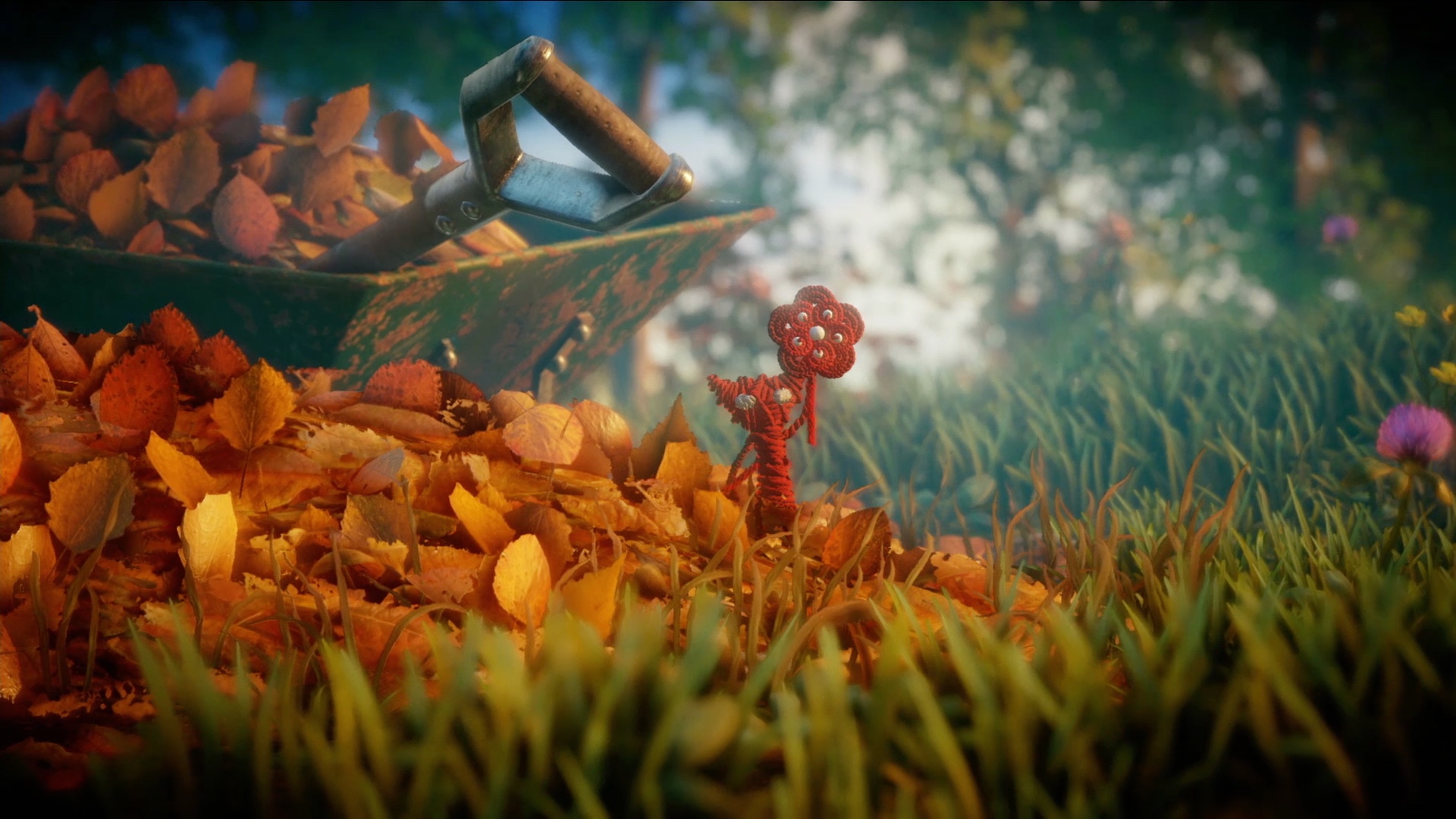Unravel is a special little game, and not just because it had me seriously considering driving to my local craft store to buy some yarn. It’s because it simultaneously made me want to call my grandma to tell her I love her.
Since its adorable and surprising reveal at EA’s 2015 E3 press conference (I’m not crying, you are), it was clear that Unravel would be the result of a labor of love as the game’s creator, Martin Sahlin, introduced the world to Yarny, a small creature made of – you guessed it – yarn.
Yarny is an instantly likable and wonderful main character. And in Unravel the world and setting he gets to explore is nothing short of extraordinary. Whether Yarny is jumping through piles of leaves, hanging onto dandelions, or sliding down an icy slope, the entire game gives off the feeling that you’re simply peering out your window to see what’s out there. Through it’s realism and attention to detail, it creates an atmosphere of beauty and charm as it represents the breath-taking environments of Northern Scandinavia, home to the game’s creator.
Unravel’s underlying narrative resists the urge to use any dialogue in its approach (which functions wonderfully) as Yarny enters each level through an old photograph placed around a house of an elderly woman. No details or background are given on the times and places that he finds himself in, but as Yarny visits each picture, small tidbits of the past, this family’s greatest, happiest and saddest moments, are shown, allowing Yarny to literally become the thread between the events of the past and present.
“It’s about trying to reconnect,” Sahlin has said, “about putting in the effort to reach people who you might have gotten separated from and re-establish those bonds.”

Gameplay wise, Unravel is a side-scrolling puzzle platforming title most comparable to Little Big Planet, but with more realistic physics and a larger emphasis on the puzzle half of the genre. As Yarny traverses through each of the game’s 10 levels, he’s literally unraveling, losing the yarn that he’s made of, leading to an interesting mechanic which forces players to choose the appropriate and smartest way to solve each puzzle. When Yarny gets down to the end of his yarn, he will tug and tug until he can no longer move, forcing you to go back and figure out the true way to discover the solution to the puzzle.
Each of these puzzles takes advantage of the many moves that Yarny can perform. With nothing but yarn by his side, the little guy can lasso, climb, and tie knots to create bridges, all of which must be skillfully combined to make it to the end of each level. At first, players may be stumped by the puzzles that the game presents, but after a few ‘aha!’ moments, the challenge mostly falls away and the later levels in the game are brought down by sequences of repetitive puzzle challenges and more annoying mechanics. Where the early levels created smarter puzzles by focusing on the nature and the beauty of the outdoors, much of the second half is focused on the industrialization of the landscape. This ultimately hurts the game’s creativity as Yarny is forced into cheap death after cheap death due to the types of puzzles that are created using machines, toxic waste, and large mechanisms. While the goal is to bring awareness to the awful side effects of the rise of the industry, it ironically does harm to the game’s puzzle mechanics as well.

Unravel is a poignant, picturesque game that is all about nostalgia, with a lovable main character, a realistic-looking world, and a mostly smart take on puzzle platforming. Sahlin was clearly able to take inspiration from his own life and put it into the game, and the love he poured into it can be felt at almost every moment of Yarny’s journey, whether it’s in the opening cutscene or in the final moments where he thanks you for his game. Unravel may not be the largest game released this year, but it’s definitely in the running to be the one with the biggest heart.

